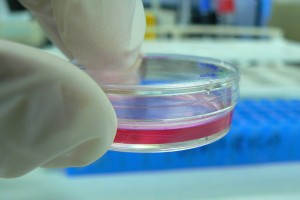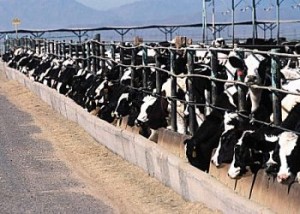While “Humans no longer raise animals for food” is still a science fantasy in TV shows like Star Trek, growing meat from a Petri dish as one solution to achieve this goal is no longer a far-fetched dream.
Around 2000, Morris Benjaminson, has successfully produced fish fillet from goldfish skeletal muscle in the lab, and deep-fried their result. “It looked and smelled pretty much the same as any fish you could buy at the supermarket,” says Benjaminson (Scientific American).
Two years ago, two people tasted the in vitro beef muscle prepared as a burger patty at a news conference in London for the first time.

[by youtube channel Maastricht University Cultured Beef]
They both agreed that the texture was quite close to meat. “I know there is no fat in it so I didn’t really know how juicy it would be, but there is quite some intense taste,” said one taster.
We seem be able to see lab-grown meat in production fairly soon. However, would in vitro meat be our future meat source even if they taste no different from natural meat?
I think there are some obvious advantages. First of all, in vitro meat allows us to control its nutrition content, hence it can be much healthier than farmed animals. Secondly, reducing animal farming can significantly reduce animal cruelty, the burden on land use, and animal waste. Last but not least, from a environmental point of view, in vitro meat can even reduce green gas emissions. For example, cattle farming is infamous for their Methane emissions (Food and Agriculture Organization of the United Nations), and Methane has a global warming potential 72 times more than carbon dioxide over a 20-year-period based on a 2007 report by Intergovernmental Panel on Climate Change (IPCC).
However, people do argue that there might be some disadvantages that we should look out for. For example, Science Friday has pointed out a few down-sides such as reduction on animal by-product, and the $300,000 price tag for a beef burger patty. However, I think these are trivial problems given that animal by-products have already been largely replaced by artificial materials, and the scientists were quite confident about cutting the price down. The most interesting point is that they mentioned that it is just like industrial revolution, artificially producing natural product is always going to cost more energy, which is not necessarily a good thing for the environment. I agree that it does seem like more energy cost is inevitable, but energy related environmental damage is something that we have already been working on for years, and it is up to us to prevent it from very beginning.
All in all, I think with a combined effort with other solutions that we have already been working on such as animal farming regulation, and a global effort on reducing green house gas emission, there is definitely a place for in vitro meat to benefit us to some extend in the future.
By Sainan Liu





